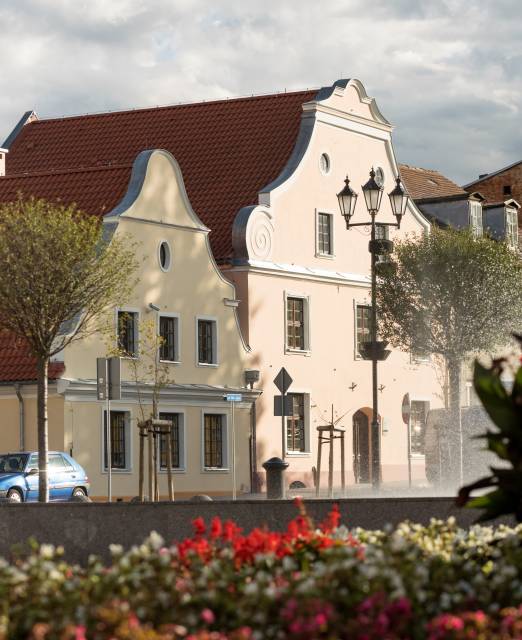On 1st September 1939 Germany attacked Poland. The inauspicious course of the fighting made German troops approach Włocławek on 9 September. The town was defended by the troops of General Juliusz Drapella. Włocławek was finally taken over by the Germans on 14 September 1939.
Soon after the occupation, repressions against the Polish population began.
On 7th October 1939, priests began to be arrested. From the Włocławek diocese, 224 priests died in concentration camps, including Bishop Michał Kozal. Under the pretext of preparing for the start of the school year, on 26th October 1939. The Germans rounded up teachers - 119 of them were arrested. In total, 217 teachers from schools in Włocławek were exterminated during the war. On 11 November 1939, the occupiers murdered the previously imprisoned representatives of the local elite, including the town's president, Witold Mystkowski. On the first two days of December 1939, the district of Grzywno was destroyed and burnt down, and its inhabitants were arrested and murdered.
The town - renamed Leslau – became a part of the Third Reich, together with the Kuyavia region, as the Warta River Land. During the occupation, a policy of eradicating traces of Polishness was implemented: Polish schools were closed, and cultural property was destroyed or looted. A campaign of deportation of Poles was carried out until the end of 1944. According to the German plans, Włocławek was to become a city of two hundred thousand inhabitants, populated by settlers arriving mainly from the Reich and the Baltic States.
The fate of the Jewish population was no less tragic. As early as 24 September 1939, two synagogues and several residential buildings were set on fire. More than 1,000 people were arrested. In the autumn of 1939, deportations of Jews to the Generalgouvernement began. The remaining Jewish population of the town and district was gathered in the ghetto created in Włocławek. The ordeal of the Jews lasted until the end of April 1942, when the remaining survivors were martyred in the camp built in Chełmno nad Nerem, and the ghetto was set on fire to wipe out the traces of the crime.
Although underground activity in the countries incorporated into the Reich was very difficult, a resistance movement began to take shape in the autumn of 1939.
On the territory of Włocławek the following military organizations were established: the Command of the Defenders of Poland ‘Grunwald’/ in Polish: Grunwald, Komenda Obrońców Polski/; the Polish Armed Organization “Znak” /in Polish: Polska Organizacja Zbrojna Znak, the People's Fighting Organisation /in Polish: Bojowa Organizacja Ludowa/. At the same time, conspiratorial scouting and secret teaching structures were set up. In March 1940 the largest independent conspiratorial organization in Włocławek, the Kuyavia Political and Literary Union /in Polish: Kujawski Związek Polityczno-Literacki/ was founded. As early as January 1940, the military organization The Inspectorate of the Union for Armed Struggle/ in Polish: Inspektorat/ Związku Walki Zbrojnej/ - later known as The Home Army / in Polish: Armia Krajowa/ - was established in the city. In addition to the above-mentioned organizations, some other ones like: ‘The National Military Organization’ /in Polish: Narodowa Organizacja Wojskowa /; ‘The Lizard Union’ /in Polish: Związek Jaszczurczy/; ‘The National Armed Forces’ /in Polish: Narodowe Siły Zbrojne / and ‘The Sword and Plough’ conspiratorial military organization /in Polish: “Miecz i Pług” / also operated in the city between 1940 and 1944.



 Places
Places Guides
Guides Map
Map Outdoor games
Outdoor games Trails
Trails Events
Events Mobile app
Mobile app Contact
Contact


